🎣 Shore Jigging Must-Have Gear
Catch more kingfish, snapper, and trevally with the right gear:
✅ Zephyr Jig (30g) – Built for long casts and deep strikes
✅ Bom Dart 30g – Secure hooksets for soft plastics
✅ Slice Jigs – Deadly from shore for Bonito and Trevally
💥 Grab Your Jigs Today & Fish Smarter!
The Thrilling Dangers of Rock Fishing
A Strong Man's Game That Requires Nerve and Pluck
By Charles Thackeray (Wobbegong), Founder of the Amateur Fishermen's Association of N.S.W.
 Rock fishermen are not averse to the title of "rock-hoppers." They make light of dizzy heights and climbs which test the muscles. One of the rock fishermen of the Amateur Fishermen's Association of N.S. Wales gravely assured his fellow members at a meeting the other night that all the members who followed him on the rocks could feel assured that they would have a feeling akin to that when they got a new £1000 life assurance policy.
Rock fishermen are not averse to the title of "rock-hoppers." They make light of dizzy heights and climbs which test the muscles. One of the rock fishermen of the Amateur Fishermen's Association of N.S. Wales gravely assured his fellow members at a meeting the other night that all the members who followed him on the rocks could feel assured that they would have a feeling akin to that when they got a new £1000 life assurance policy.
Those photographed on the perpendicular climbs were Messrs. G. Hollingdale, oft-times champion fisherman of the A.F.A., A. Sara, the expert shark-angler of Bondi, and the writer.
Izaak Walton, in his wildest dreams—if such a staid and kind old gentleman ever had wild dreams—could never have envisioned all the angling developments that the world has accepted since his time. Anglers have not changed much, but their methods have altered. There are as good liars among fishermen these days as ever there were, and the latter-day men have better excuses for small bags than the old-time chaps.
Walton placed angling ahead of hunting, hawking, and fowling, and these sports still carry on in the rear of the many-sided king of sports, which in Australia, as in other advanced centres of civilization, counts its adherents by tens of thousands.
Grounds for a Riot
A nice argument could be engaged in as to what branch of modern angling has the greatest attractiveness and thrill, and probably the following observations will help to stimulate devotees to specialized branches of it to warmer espousal and greater endeavor. To hear a blackfish angler expert in the use of the split cane rod defending his sport against the superior assumptions of the man who fishes with the finest of gut lines from a boat moored fore and aft for black bream that have reached the age of discretion and know that a hand-line is a delusion and a snare for their unsophisticated shoal brethren, is a dialectical diversion; but it pales into insignificance when a fly fisher for trout crosses linguistic swords with a spinner and troller for big game of the ocean.
Bitter Rival Claims
After hearing these sections get to verbal work on one another, the arbitrator may be able to listen with patience to the rival claims of the drift fisher for whiting, to the beach angler who catches half a ton of live shark on rod and reel, and to the cliff climber and rock fisherman who despises all the rest for playing a "sissy" game compared with his strenuous pastime.
The deep-sea trawlers and the net fisher, being wholesalers who may be good sports but do not fish for sport, may be left out in the cold for awhile. They are the people who laugh last, because when all the rest of the fish-seekers fail, they can go out and enclose a catch worth good money.
Of all the fishing games, that of the cliffs is the most spectacular. It may be truly said of it, as Dame Juliana Berners said of angling generally in the year 1496, that it "seemeth one of the good dysportes and honest gamys in whom a man joyeth without any repentance after." Just scan the list of your friends who fish from the ocean rocks and see if they are not active, healthy men even in their seventies. Any rock-hopper will tell you that his game keeps him clear of rheumatism or cramps, such as are sometimes the lot of the man who only fishes from a boat and does not use his legs as well as his arms. Cliff-climbing has its own fascination, but when it is allied to fishing, it is a veritable magnet to the sportsman of the out-of-doors.
To reach the best fishing rocks along the coast, men may have to use ropes, rope ladders, and wooden ladders, or they may use hand-holds and footholds cut in the face of the cliffs. They make precipices their friends, and they have clear heads and supple muscles.
No cliff-fisher dreams of extending his fingers only to grasp a friend's when climbing. He stretches his hand down or up to grasp the wrist of his friend who similarly clasps his wrist. Wet or nervy fingers may slip, but the wrist clasp is the clasp of life. The feet of the man below may slip, but the wrist clasp will snatch him away from death.
Wet rocks covered with marine or other algae are more treacherous than brittle honeycomb rock or the crumbling shale of the celebrated Goat Track at North Head.
There are rock fishing places near Sydney where a man on a climb is as insignificant an item as a fly on a wall. On some of these places, clear-headed and fearless men have hung suspended from rope chairs in order to drill holes in the cliff face into which they leaded or cemented iron spikes.
Such a place is found at Rosey Gully, a little to the south of the big lighthouse at South Head. Most of this was done by sewer workers who happened also to be fishermen.
Beware the False Step At several places along the coast, fixed wooden ladders are perched on narrow ledges. A false step or a sudden attack of nerves will imperil a climber, but the regular users of Jacob's ladders do not suffer from nerves. Their footing is their main consideration.
At several places along the coast, fixed wooden ladders are perched on narrow ledges. A false step or a sudden attack of nerves will imperil a climber, but the regular users of Jacob's ladders do not suffer from nerves. Their footing is their main consideration.
The inexpert climbers suffer from a peculiar nausea. They cannot stand upright on a narrow ledge without feeling a desire to lean outward. The sea seems very near to them and suggests something to lean against. That is the dangerous feeling of the cliffs that must be overcome.
The whole attention of the climber should be concentrated upon the footing, and anything outside it should be shut out of the vision and mind. Perpendicular climbs such as the Honeycomb at Bluefish, near Manly, are safe to the expert but death-traps to the inexpert. Even to the former, Honeycomb rock is never an entirely trustworthy thing. In a down climb on Honeycomb, the foot goes first all the time, and it is simple to kick and test the footing before shifting.
Boom Over Worst Pinches
Cliff fishermen need to have their hands free, so they usually carry bags that go around their shoulders. In such a place as the Ladders (the matting), between Bondi and Rosey Gully, they have a boom with a pulley stuck over the worst places, and haul their loads of fish and gear up after they have negotiated the climbs. Personal courage has nothing to do with the business. There must be a liking for it, freedom from dizziness, and a degree of physical fitness.
Sometimes the climbers have two sugar bags tied together and suspended around their shoulders by knots that are never "grannies," but safe reef-knots.
Here and there along the coast, chimney climbs are used. These are rock angles in which the knees and elbows may be employed to ascend or descend. What does it matter to a cheerful rock-hopper if he grinds through the knees of his pants? He wears his oldest clothes for such strenuous sport.
Neither does it matter to the rock fisher whether prawns are a shilling or five shillings a pound. He does without prawns, but he does not always despise a bit of fish bait. His appliances for getting bait are a knife and a crab spear. The knife cuts open the tough cases of the tunicate known as cunjevoi, in order that the meaty contents may be scooped out with the fingers.
Blue or brown groper, sea carp, morwong, schnapper, eel, kelpfish, drummer, and sea-perch that will not take crab or a meaty piece of "cungy" are rare birds. The rock fisher's finny rewards make the fish hunter assert with his hand uplifted that his game is worth the risks.
Spinning for Kingfish
Another sturdy band of men who enjoy taking a risk in the ocean fish from motor boats, sailing or pulling boats, with rod and reel for game fish. Theirs is another sort of thrill altogether, and time never hangs wearily upon their hands except when a southerly wind blows and sends their quarry away from the surface.
Sometimes they spin from a stationary boat, but more often they troll from a moving one, and have fights with big fish that take beating by force and cunning.
The kingfish is one of the finest fighters in the Pacific. It is a combatant worthy of any angler's respect, and the number of piano-wire traces and flights of hooks it has got away with brings smiles to the faces of fishing tackle sellers and swear words to the mouths of the hunters.
The sport is highly flavored, because the sea is often rough, and it may be a long way to port, but there are plenty of men prepared to take the risk of being blown away to New Caledonia for the sake of a few combats with large fish that do not know when they are beaten.
Tunny Stalking
It is not only kingfish that these sturdy sons of the cult pursue. They go after Spanish mackerel, tunny, swordfish, sharks, and porpoises. With a tuna or tarpon rod, large reel (either a Vom Hofe or one like it), and a cuttyhunk line, the men challenge the swiftest of swimmers in the sea, and often beat them. Most of the experts belong to the Anglers' Casting Club of New South Wales, and one of the best catches of southern tunny was secured seven years ago off Port Stephens, the headquarters of the club, by Sir Herbert Maitland and Messrs. C. H. Gorrick and H. O. Chidgey.

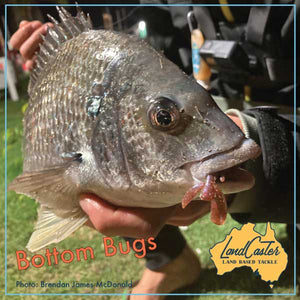
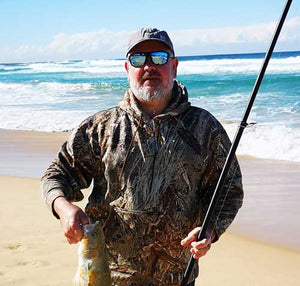
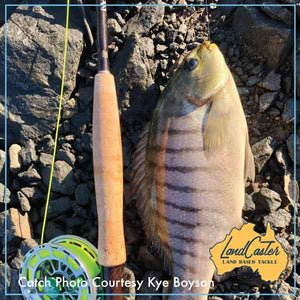
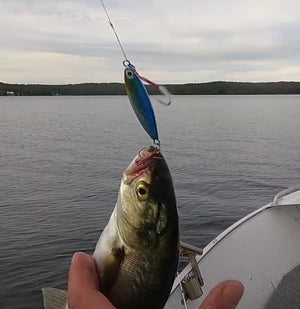
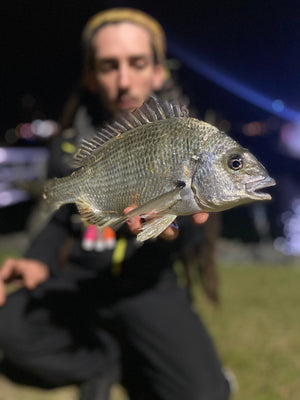
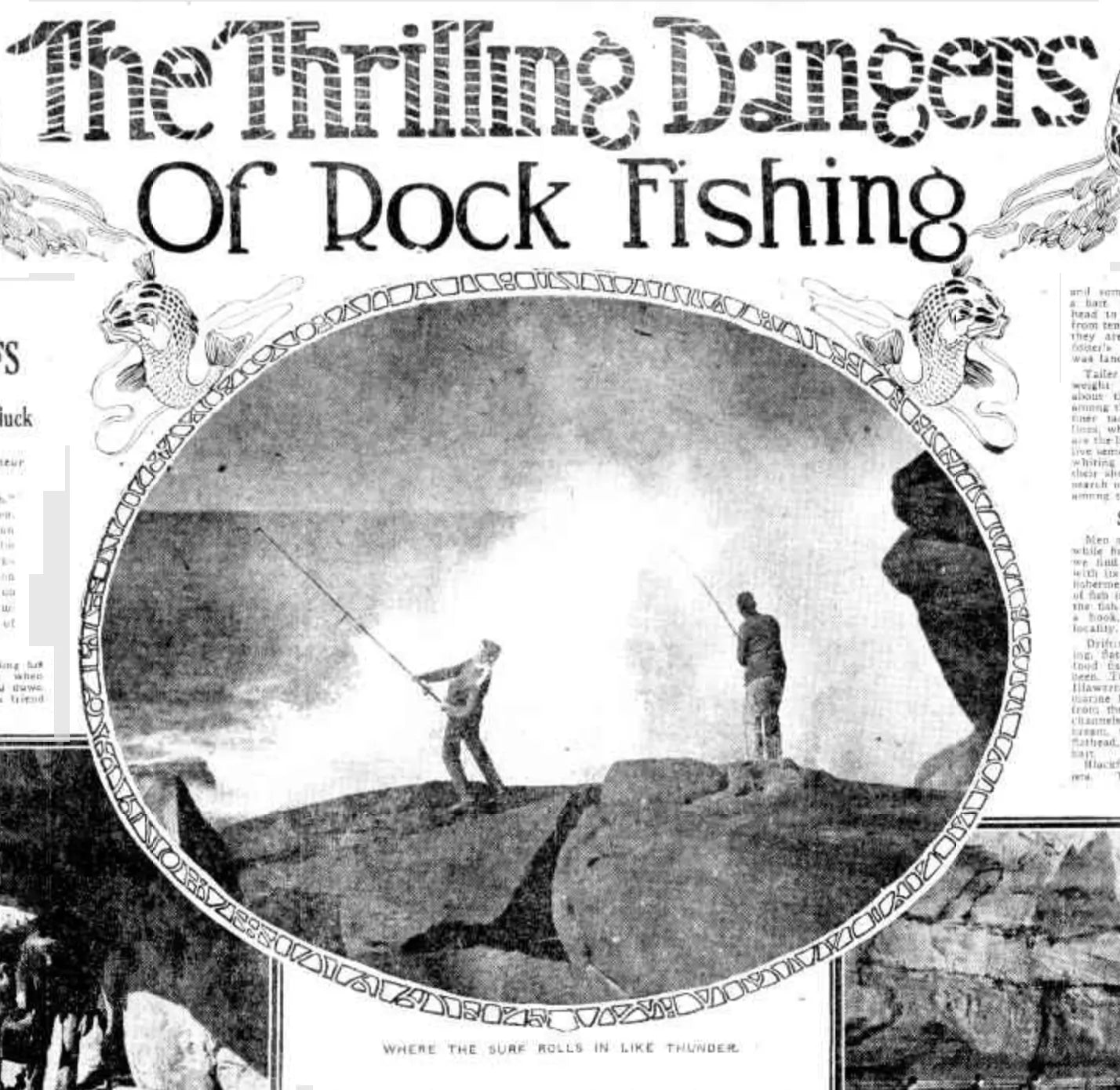
Comments
Leave a comment